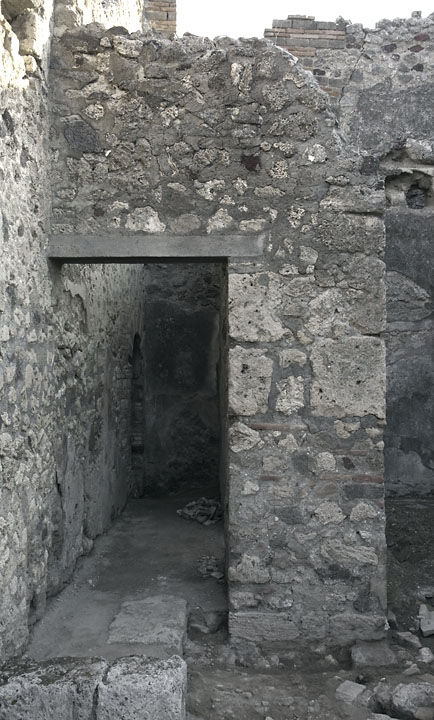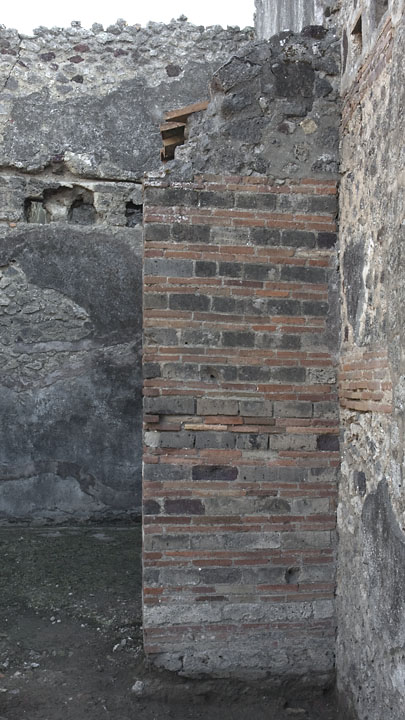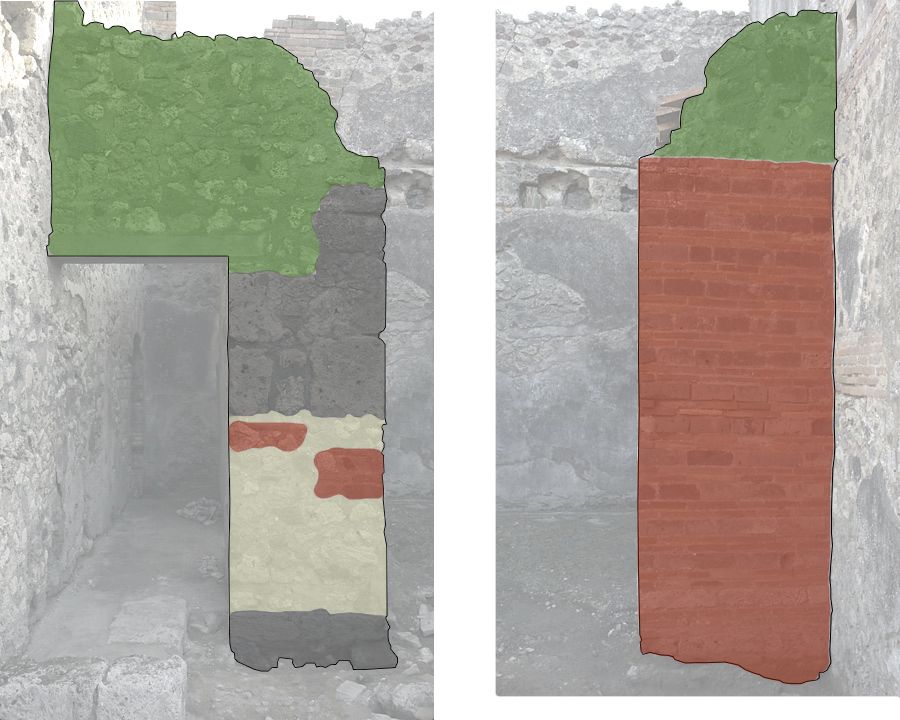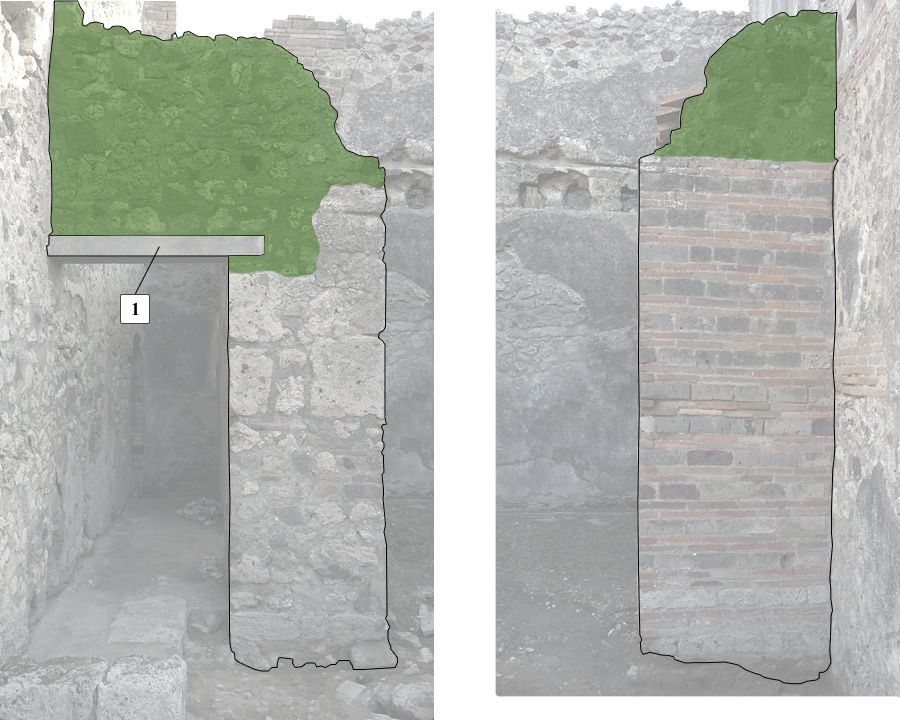East Wall
Description
Mats Holmlund
The wall consists of two parts, separated by the door to room 3.
The northern part
The north part of the wall is 1.90 m wide and 3.80 m high. Two separate doorways define the northern part of the wall. The first door opens up a passage to room 3. It is circa 1.50 m wide and 2.10 m high. Its northern doorpost is the north wall of the room and its upper part consists of a (modern) concrete lintel. The lintel is about 1.20 m wide and 0.11 m high. The other doorway opens up a passage to room 2 (between the north and the south part of the east wall) and that door is approximately 1.60 m wide and at least 2.60 m high. The top part of the wall was probably part of a wall on the upper floor.
The wall is built in three different styles: The base of the wall is built in opus quadratum and consists of two limestone blocks. From 0.15 m above the ground level up until circa 1.30 m, the construction method changes to opus incertum (including a failed effort at opus listatum). From 1.30 to circa 2.05/2.50 m from the grund level, the method changes back to opus quadratum again. Above (and north of) that level the method changes once again, but this time to opus incertum (this part of the wall, along with the lintel, is probably a reconstruction).
The quadratum parts of the wall are made up of rather "scruffy"-looking limestone blocks of different sizes. The listatum feature is made up of alternating rows of tile and stones (limestone, lava, cruma, and reused bricks). However, the pattern is very irregular and perhaps this feature should be characterized as "opus quasi-listatum". The incertum parts of the wall consist of limestone, lava, cruma, and tufa.
The mortar of each part of the wall differs from each other. The mortar of the bottom quadratum part is yellowish grey and contains grains of lava, limestone and cruma. The same mortar is used for the incertum and "listatum" parts, but the mortar of the upper quadratum and incertum parts is dark grey and contains grains and some larger bits of lava. This dark mortar seems to have been applied to the wall in recent times to prevent the original mortar from erode (in some areas a lighter grey mortar is visible beneath the darker grey one). In some places, another type of modern grey mortar, that contains grains of lava, limestone and some bits of lapilli, has been applied on top of the yellowish grey mortar.
At several places, the corners of the wall have been "improved" (in modern times) by the application of mortar, to make the wall more quadrangular.
The southern part
The south part of the wall is built in opus listatum style from the floor level up until 2.60 m from the ground. Above that level, the construction method changes to opus incertum. The listatum part is made up of two rows of tiles alternating with one row of tufa (in some instances the tufa is replaced by cruma and limestone), except for the two rows closest to the ground level, where there are three rows of tiles alternating with one row of limestone blocks, instead.
The mortar of the listatum part is yellowish grey and contains grains of lava and limestone. The mortar in the incertum part is dark grey and contains bits of lava. The incertum part is probably a modern reconstruction that was built when the roof above the south wall in room 2 was constructed. At the bottom of the incertum, in the south corner, there is a 0.40 by 0.40 m large patch where modern mortar/cement has been applied to the wall. The same mortar has also been applied to some rows in the listatum part of the wall.




